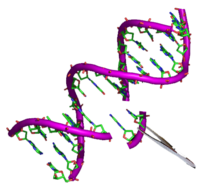
Photo from wikipedia
Development of a genetic tool for visualization of photosynthetic bacteria (PSB) is essential for understanding microbial function during their interaction with plant and microflora. In this study, Rhodopseudomonas palustris GJ-22-gfp… Click to show full abstract
Development of a genetic tool for visualization of photosynthetic bacteria (PSB) is essential for understanding microbial function during their interaction with plant and microflora. In this study, Rhodopseudomonas palustris GJ-22-gfp harboring the vector pBBR1-pckAPT-gfp was constructed using an electroporation transformation method and was used for dynamic tracing of bacteria in plants. The results showed that strain GJ-22-gfp was stable and did not affect the biocontrol function, and the Confocal Laser Scanning Microscopy (CLSM) results indicated it could successfully colonised on the surface of leaf and root of tobacco and rice. In tobacco leaves, cells formed aggregates on the mesophyll epidermal cells. While in rice, no aggregate was found. Instead, the fluorescent cells colonise the longitudinal intercellular spaces between epidermal cells. In addition, the results of strain GJ-22 on the growth promotion and disease resistance of tobacco and rice indicated that the different colonization patterns might be related to the bacteria could induce systemic resistance in tobacco.
Journal Title: AMB Express
Year Published: 2019
Link to full text (if available)
Share on Social Media: Sign Up to like & get
recommendations!